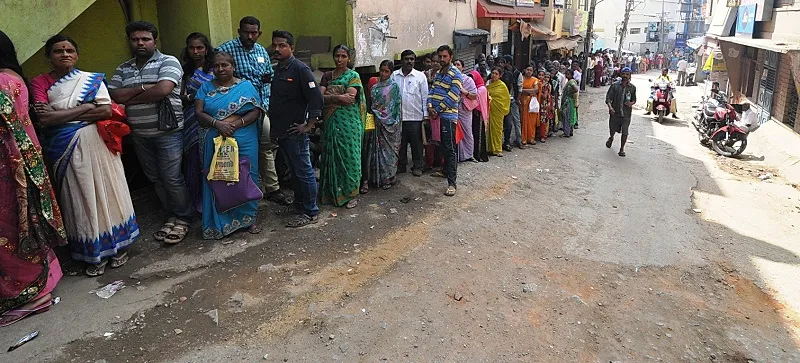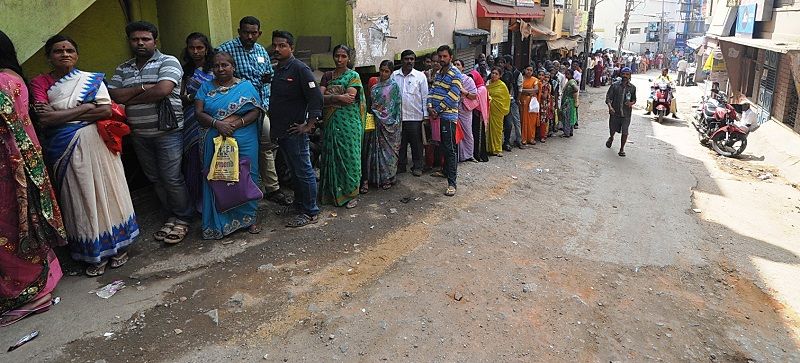SMBs exorcise the demonetisation demon, make a slow comeback
A year ago, SMBs were reeling under demonetisation. However, a normal monsoon and with the hope of the RBI lowering interest rates, SMBs expect higher consumption and a rise in industrial production to weather the storm.
When Prime Minister Narendra Modi made his surprise televised address a few days after Diwali last year, Indians were caught completely unawares. The Indian government said demonetisation was a move to crack down on black money and tax evasion, but it made life very tough for the common man. The decision that Rs 500 and Rs 1,000 notes would cease to be legal tender led to a situation where one billion Indians had to make do with very little money for at least five months.
The RBI, in its annual report, said Rs 15.28 lakh of these high-value bills had come back to the system and that this represented close to 98.75 percent of the total money in circulation in such bills.
While the government says it has been successful in flushing out fake currency with this move, what has been the socio-economic impact of demonetisation?
Chandra Mohan Grover, Co-founder of IBSFintech, says: “We must understand two things here. It affected the economy in the short run and impacted the common man.” IBSFintech works with banks and corporates to manage their treasury management systems.
“But,” he adds, “It’s a decision that sent a strong signal to the world that India was heading towards increasing the tax net and focus on digitisation.”
So what impact did it have on the common man and small stores or mom-and-pop retailers?

Saleem Mohammed, a small department store retailer in Vasanthnagar, says, “We did not suffer as much as our distributors did.” He says he offered people credit, customers began to purchase in small ticket sizes, FMCG companies began discounting stock and distributor margins were impacted.
According to Ernst&Young, there are 600,000 distributors and 12 million mom-and-pop retailers in India.
The small and medium-sized enterprise (SME) sector is a big chunk of the Indian economy, contributing to 8 percent of the GDP while employing more than 80 million people year on year.
How did demonetisation affect distributors?
The major mistake that distributors made last year during demonetisation was that they put all their money back into the banking system.
Lalit Bhise, co-founder of Mobisy Technologies, a technology platform that works with 25,000 distributors, says: “Although it was a good thing that they put back cash in the system, they ordered a lot more in the same period and could not sell product, which became the issue. It was a pure case of inventory being built up and they struggled for four months.”
The impact on business was in the margins. The distributor ecosystem makes a net margin of 1 percent and a gross margin of not more than 3 percent. Without cash, several of them began to wait out with their savings and this affected several distributors in offloading stock at minute margins.

Details provided by SnapBizz, which collected data from over 2000 small stores, reveal the impact on consumer offtake:
- There was a 25 percent decline in the offtake by consumers in 2 weeks’ post demonetisation.
- Some cities were affected more than others. Mumbai and Delhi saw a sharp decline (to the tune of 31 percent) vs Bangalore that saw a decline to the tune of 18 percent.
- Non-essentials like cigarettes, chocolates, dry fruits, baking/ dessert prep, soft drinks and juice concentrates saw a sharp decline in the range of 16 percent to 33 percent.
- Categories like baby food, masala, staples, oral care and haircare did not see any impact on sales/number of bills.
- The following categories saw an increased instance (to the tune of 11 percent) in favour of big pack purchases: Staples like cooking oil, dals and pulses, flour, sooji, grains, tea and salt; personal care items like liquid soaps, mouthwash, toothpastes and depilatory aids.
- There was an increased instance of consumers buying smaller packs for categories such as cleaning accessories, creams and lotions, desserts, face wash and health drinks (personal care items). The percentage shift from large packs to small packs was 23 percent.
- Few categories saw purchases moving from branded products to unbranded/loose items. This could be due to retailers giving credit and hence pushing high-margin unbranded/loose items. These include
- Snacks – 12 percent
- Cooking oil – 8 percent
- Dals and pulses – 23 percent
- Masalas – 11 percent
- Tea – 24 percent
- Deodorants, pickles, noodles/pasta, hair colours had very low offtake during this time period and this was consistent across cities.
The current scenario
Rahul Garg, the founder of Moglix, a B2B e-commerce store that works with medium-sized businesses, says that the cash economy was hit for three months. "Several wholesalers who had parallel books were impacted. The good part is we have been able to onboard several of them to go digital and most importantly the government made a strong policy that evasion of tax is no longer going to be easy," says Rahul Garg. He adds that demonetisation was a short-term problem and that it hurt the economy for two quarters. "Along with the GST there has been a push to go digital and it impacts us all in the short run. But, it is a long-term vision for tax reforms in the country," he says.
Almost a year after demonetisation, how are things in shops and stores, and with consumers?
- The median of number of items purchased in a basket in both digital payment and cash stores has returned to normalcy.
- The basket size immediately after demonetisation had declined by 16 percent and fell further by 19 percent in the week after for stores using only cash mode of sales. However, by the third week, the basket size grew by 6 percent and returned to normalcy by March 2018.
- The median basket size in stores enabled for digital transactions saw a six percent decline and 11 percent decline in the two weeks after demonetisation. In the current week, the trend remains the same with a one percent change.
- There seems to be more cash circulating in the market and being spent at stores now.
Jayaram Raju K, the founder of LOBB, a tech platform for truckers and brands, says: “The good part is that several B2B companies such as logistics, which supply to the wholesale retailing industry, managed to go digital.”
The logistics industry is 90 percent cash-driven and demonetisation had an impact on the lives of the drivers. It took six months for the logistics industry to bounce back, since consumption began to grow since April 2017. However, truckers began to benefit as companies started transferring money digitally.
“Today we have ensured 100 percent of our transactions are digital,” Jayaram says.
A cashless economy
Lobb has grown from just $0.5 million annual rate of return in December to $12 million ARR in 10 months. Jayaram adds that transporters and truckers are able to transact using BHIM (UPI) and net banking smoothly.
“This has improved overall efficiency in the system,” Jayaram says.
Overall, the logistics industry has turned to a cashless economy. Drivers are carrying ATM cards and smartphones to do digital transactions, and are using FASTAG technology for Digital Toll Payments.
Credit rating agency Crisil in a report said the economy slowed to 5.7 percent because of demonetisation, but was going to bounce back because of good monsoons and consumption remaining steady. Crisil said a normal monsoon, lower interest rates (expected because of excess liquidity in the banking system) and implementation of the Seventh Pay Commission will increase consumption.
Industrial production has grown by 1.17 percent when compared to a negative growth in December 2016.
With these bright portents, India may recover from the demonetisation and GST setbacks in the coming quarters and tread the growth path.











